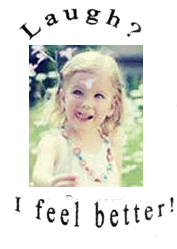题目内容
阅读理解。
"Haibao, the mascot (吉祥物) of the 2010 Shanghai World Expo, is very cute," said Gu Hui, a school kid.
"I want a big toy like the mascot."
Haibao looks like the Chinese word ren, which means people or a person. The name, a typical lucky one
in Chinese tradition comes from the Chinese phrase "Si Hai Zhi Bao" -the treasure of the four seas. It also
means the treasure of Shanghai, which lies beside the sea.
Haibao's blue curly (卷曲的) hair looks like the waves of the sea. Its smile is a sign of the healthy spirit
of China. Those thumbs-up (翘拇指) will welcome millions of people to Shanghai from around the world.
Its big feet show China has the ability to host a successful Expo.
Haibao was created by two artists, one from the mainland (大陆) and the other from Taiwan. The design
is about people living together in the city. The designers want it to fit the theme of the Shanghai Expo, that is,
a good life should be created by all the people and people should have harmonious relationships (和谐关系)
with nature and society, so that life in cities would be better. Surely the mascot will become the lucky symbol
and cultural remark of Shanghai Expo.
"I want a big toy like the mascot."
Haibao looks like the Chinese word ren, which means people or a person. The name, a typical lucky one
in Chinese tradition comes from the Chinese phrase "Si Hai Zhi Bao" -the treasure of the four seas. It also
means the treasure of Shanghai, which lies beside the sea.
Haibao's blue curly (卷曲的) hair looks like the waves of the sea. Its smile is a sign of the healthy spirit
of China. Those thumbs-up (翘拇指) will welcome millions of people to Shanghai from around the world.
Its big feet show China has the ability to host a successful Expo.
Haibao was created by two artists, one from the mainland (大陆) and the other from Taiwan. The design
is about people living together in the city. The designers want it to fit the theme of the Shanghai Expo, that is,
a good life should be created by all the people and people should have harmonious relationships (和谐关系)
with nature and society, so that life in cities would be better. Surely the mascot will become the lucky symbol
and cultural remark of Shanghai Expo.
1. Which is the mascot of the 2010 Shanghai World Expo?

2. Which of the following is NOT true?
A. School children like Haibao.
B. The name Haibao shows Chinese traditional culture.
C. Haibao is the wisdom of two artists.
D. Haibao is an animal living in the sea near Shanghai.
B. The name Haibao shows Chinese traditional culture.
C. Haibao is the wisdom of two artists.
D. Haibao is an animal living in the sea near Shanghai.
3. What is the theme of the Shanghai World Expo?
A. One World, One Dream.
B. One China, One Family.
C. Better City, Better Life.
D. Shanghai, An Open City.
B. One China, One Family.
C. Better City, Better Life.
D. Shanghai, An Open City.
1-3 BDC

练习册系列答案
相关题目
1. What is the author's attitude towards protecting (保护) intellectual property rights?
A. He is for it. B. He is against it.
C. He doesn't care about it.
D. The article doesn't tell us.
C. He doesn't care about it.
D. The article doesn't tell us.
2. Which of the following do intellectual property rights not cover?
A. Inventions.
B. Literary and artistic works.
C. Names end pictures.
D. Pirated music.
B. Literary and artistic works.
C. Names end pictures.
D. Pirated music.
3. According to the article, which of the following is true?
A. Authors should ask for a high price for their work.
B. The copyright fee should ha fair to users.
C. Authors, singers and actors have no right to make money from their work.
D. Buying pirated music by Jay Chou is very good.
B. The copyright fee should ha fair to users.
C. Authors, singers and actors have no right to make money from their work.
D. Buying pirated music by Jay Chou is very good.
4. What is the best title for the article?
A. Rob a Bank
B. Copyright Fees
C. Say No to pirated Music
D. World Intellectual Property Day
B. Copyright Fees
C. Say No to pirated Music
D. World Intellectual Property Day
